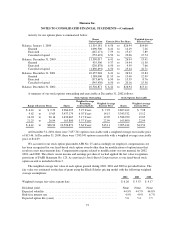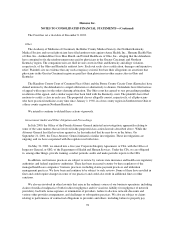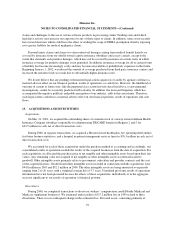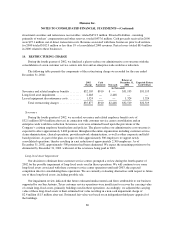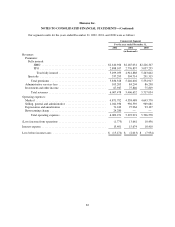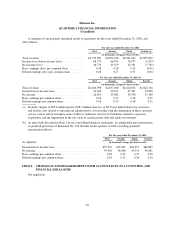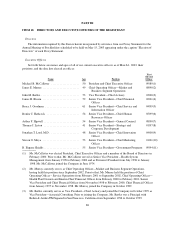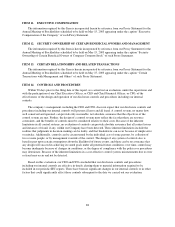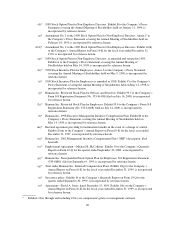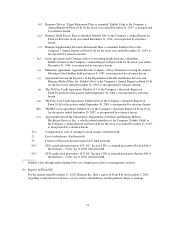Humana 2002 Annual Report Download - page 87
Download and view the complete annual report
Please find page 87 of the 2002 Humana annual report below. You can navigate through the pages in the report by either clicking on the pages listed below, or by using the keyword search tool below to find specific information within the annual report.Humana Inc.
NOTES TO CONSOLIDATED FINANCIAL STATEMENTS—(Continued)
By the end of the first quarter of 2003, we expect the estimated future undiscounted cash flow attributable to
our business supported by our Jacksonville, Florida customer service operations will be insufficient to recover
the carrying value of additional long-lived assets, primarily a building used in our Florida operations.
Accordingly, we expect to record a non-cash impairment charge of approximately $17.2 million ($10.5 million
after tax) during the first quarter of 2003. Additionally, we expect to record a non-cash impairment charge of
approximately $13.5 million during the first quarter of 2003 ($8.3 million after tax) related to accelerated
depreciation of software we will cease using with these operations.
15. SEGMENT INFORMATION
We manage our business with two segments: Commercial and Government. The Commercial segment
consists of members enrolled in products marketed to employer groups and individuals, and includes three lines
of business: fully insured medical, administrative services only, or ASO, and specialty. The Government segment
consists of members enrolled in government-sponsored programs, and includes three lines of business:
Medicare+Choice, Medicaid, and TRICARE. We identified our segments in accordance with the aggregation
provisions of Statement of Financial Accounting Standards No. 131, Disclosures About Segments of an
Enterprise and Related Information which is consistent with information used by our Chief Executive Officer in
managing our business. The segment information aggregates products with similar economic characteristics.
These characteristics include the nature of customer groups and pricing, benefits and underwriting requirements.
The results of each segment are measured by income before income taxes. We allocate all selling, general
and administrative expenses, investment and other income, interest expense, and goodwill, but no other assets or
liabilities, to our segments. Members served by our two segments generally utilize the same medical provider
networks, enabling us to obtain more favorable contract terms with providers. Our segments also share overhead
costs and assets. As a result, the profitability of each segment is interdependent.
81



